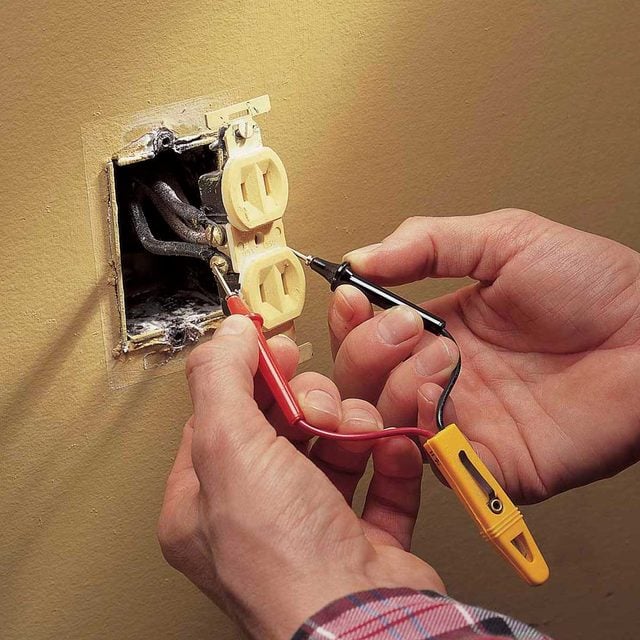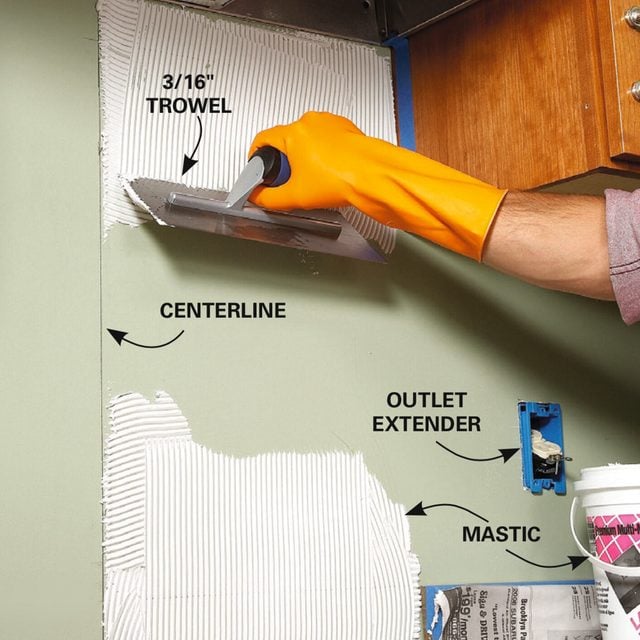A mesh-backed mosaic backsplash can add a dash of dramatic flair to a kitchen.
Our editors and experts handpick every product we feature. We may earn a commission from your purchases.Learn more.


A mesh-backed mosaic backsplash can add a dash of dramatic flair to a kitchen.
Our editors and experts handpick every product we feature. We may earn a commission from your purchases.Learn more.
Multiple Days
Intermediate
$101–250
Adding or replacing a tile backsplash is one of the easiest ways to modernize an aging kitchen, even if you have a tight budget. There's a vast array tiles to choose from. Some homeowners opt to install loose, individual tiles, but we're going to show you an easier-to-install option: mesh-backed mosaic tiles.
To add even more insight and nuance, we asked a trio of tile experts to provide insight into the selection and installation of tile backsplashes, and to highlight areas that beginners struggle with the most.
Nothing packs more style per square inch into a kitchen backsplash than upgraded mosaic tiles. While they look complex, most modern backsplashes are surprisingly easy to install. Rather than individually setting countless small tiles, mesh-backed mosaics are mounted on sheets that can be installed all in one go or custom cut to fit your space. With mesh-backed tiles, even a beginner can tile a small backsplash in a weekend!
Mosaic sheets are a great choice for shower niches and other small spaces where larger tiles might not fit.
The hardest part of a tile backsplash project may be choosing the look.

Like many projects, proper prep work is essential to a quality finished product. While hanging backsplash mosaic tile directly onto drywall is acceptable, you will need to clean and patch the wall to provide adequate adhesion.
Cutting tile and mixing thin-set is messy. Presnell recommends taking a little time to prevent the accidental creation of a bigger mess than needed.
You’ll almost certainly have an outlet on your backsplash. For first-time tile setters, outlets can seem intimidating. Luckily, they’re not difficult to deal with, as long as you think ahead.

The area between the range and the vent hood is usually the largest space on the wall—and certainly the most seen by the cooks in the house—so it’s a great spot to use as your center point.

There are a number of different adhesives you might use for this project. The most common are mastic and thin-set mortar. Which one is right for your job depends on the type of tile, how it will be used, and the backing material. For most DIY backsplashes going right over drywall, a high-quality mastic is the best choice. (To keep things simple, we’ll be saying “mastic” in this article.)
That said, it’s important to take time to read the manufacturer’s instructions. “Using the wrong adhesive can be devastating,” says Presnell. “Stay within specifications.”
Here’s how to test if the mastic is too thick:


If you’re lucky, the tile sheets will fit against the upper cabinets and around outlets by simply cutting the mesh backing with a utility knife. But chances are that sooner or later, you’ll have to cut the tile with a wet saw. A wet saw may seem like overkill, but it’s typically the best tool to use here, as nippers and grinders can cause the slate tiles to shatter or crumble.

Wait 24 hours after installing the tile to add the grout. We used premium grout that has a consistent color and resists stains better than standard grout.
Because backsplashes are subjected to splatters from cooking, we recommend spending the extra money for a premium grout.

Tiling a mosaic backsplash is a DIY-friendly project, but there are a few areas that frequently cause headaches for those new to tile-setting. We asked our experts to share tips on what to watch out for when getting ready to start a backsplash of your own.
Jenya Teplitskaya cites inadequate surface preparation as a common tripping point for beginners. “Failing to properly clean, level, and repair the wall can lead to tiles not adhering well or becoming uneven,” she says.
Similarly, Mikey Presnell emphasizes getting enough material to get the job done. “Have 10% more product than you need. There is nothing worse than running out and such a small installation.” Remember that you can usually return unused tiles.
“Using the correct trowel is very crucial,” says Presnell. “If the notch on the trowel is too deep, it will be a nightmare of adhesive squeezing through the tile.” Always check the adhesive to see what trowel is recommended.
Speaking of adhesive, make sure the adhesive you’re using matches the job. As Teplitskaya points out, “Using the wrong type of adhesive, such as standard mastic in a wet area instead of a water-resistant thin-set mortar, can cause tiles to loosen or fall off.”
Both Teplitskaya and Presnell cited this as a common mistake. Spreading adhesive over a large area may seem like a time saver, but you’ll likely see it drying up before you can set all the tile. In the end, you’ll have to scrape off the adhesive and troweling on a new layer.